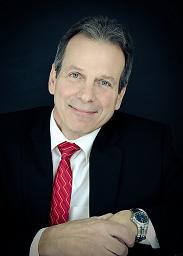So many of you inquired about my run in Denver that I felt compelled to give a report for those that did inquire, but also for those who may not have known about it. This will prevent me from missing someone.
Rick Newsome and I had run a marathon relay back in October. I ran the shortest leg and was amazed at how much the altitude affected that short 3.2 mile run. Rick asked me if I wanted to run the Colfax half marathon in May. Though incredibly apprehensive, I appreciated his gracious invitation and accepted. You must understand that Houston sits at 20-50 feet above sea level and Atlanta and North Georgia around 1,000 to 1,800 feet above sea level. Then there is Denver at 5,280 feet and the memory of my short, somewhat painful previous run.
I never could get a straight answer on how to best approach this other than you will probably never adjust to the elevation even if you go out early. The best I could do was to arrive 12 days early and, because of two friends Deb and Bill Pollick, I was able to train at 8,500 to 9,000 feet. I believed at the time that this would benefit me more. What was really interesting was as the event got closer, more and more people stepped up with information and articles on how to best approach the run. The approach I took based on that information and the wonderful people that supplied it was as follows:
- Hydrate – I drank 96 ounces of water and G2 each day
- Minimize or eliminate coffee and alcohol – I chose to minimize
- Run at about 80% of your top mileage speed
- Focus on cumulative mileage but get in one long run each week
- Eat more carbs – which I did
- Fourteen days minimal time to adjust to altitude – I only had 12
My 10 days in training prior to the event were agonizing, both mentally and physically, because when I started I almost coughed up a lung. I told myself at one point when my training was not going well that it was not necessary for me to run. It would be wiser to pull out. But, as is typical both in life and this kind of preparation, all can change on a daily basis if you’re putting the numbers in. And, in this case, it did. Incrementally, it got better daily though there were occasional setbacks. My favorite saying became “in Houston, I never got winded, but my legs got tired, in Denver my legs never get tired, but I do get winded. It makes you feel like every mile was the last mile.
Even up to the day before the event, I had my doubts, but to my surprise I not only never got winded, I ran my best time in the half marathon to date. I want to thank Rick Newsome for inviting me, and Deb and Bill Pollick for providing the perfect place to train and still work with my clients.
What did I learn from this adventure?
- Collect data
- Develop a plan
- Work your plan
- Keep the faith
- Have fun
- Have a support group
 Jim believes his 39 years of experience--particularly his more than 26 years in healthcare--has prepared him well for what he does. His wealth of experience spans key areas, including finance, operations, management, leadership, sales and sales management, corporate, contingency, contractual and retained recruiting, outplacement and transition work and executive coaching.
Jim believes his 39 years of experience--particularly his more than 26 years in healthcare--has prepared him well for what he does. His wealth of experience spans key areas, including finance, operations, management, leadership, sales and sales management, corporate, contingency, contractual and retained recruiting, outplacement and transition work and executive coaching.